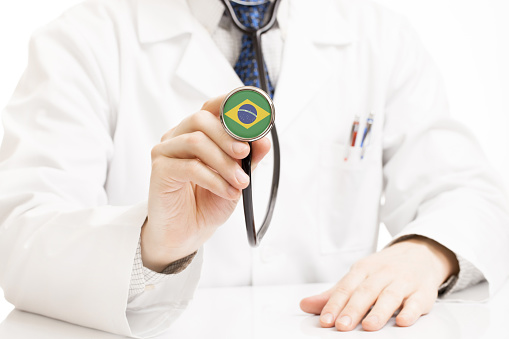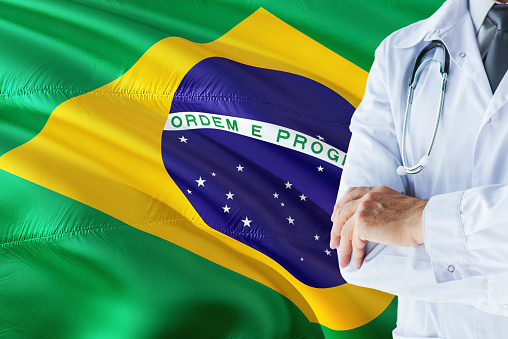The article provides an overview of the regulatory requirements for software as a medical device in Brazil.

The Brazilian regulating authority in the sphere of medical devices (ANVISA), has published a questions and answers document dedicated to the regulatory requirements for software as a medical device (SaMD). The document provides additional clarifications regarding the existing regulatory framework, as well as recommendations to be taken by medical device manufacturers (software developers) to ensure compliance thereto. At the same time, provisions of the guidance are non-binding, nor are intended to introduce new rules or impose new obligations.
Regulatory Background
The document describes in detail the regulatory framework for SaMD introduced earlier in July 2022. In particular, the document outlines the most common questions received by the authority from the industry representatives and provides explanations associated thereto. The scope of the guidance covers the main topics related to the software used for medical purposes. The authority also mentions that it keeps receiving new questions and will consider them when preparing an updated version of the document. The Q&A document uses the terminology and concepts introduced by the applicable regulations. The ANVISA additionally emphasizes that the present document does not in any way impact the applicable technical requirements the device should meet under the general rule, its scope of applicability is limited to the advice on the approach to be applied by medical device manufacturers and other parties involved to ensure the said requirements are followed.
As further explained by the authority, by the virtue of the guidance, ANVISA intends to assist medical device manufacturers and other parties involved with interpreting and following the rules and requirements set forth by the Resolution RDC No. 657 dated March 24, 2022, concerning medical devices intended to be marketed and used in the country.

Initial Provisions
The document outlines the key points related to the regulatory requirements to be taken into consideration and also highlights the main aspects associated thereto. The aspects addressed in the guidance include, inter alia, the following ones:
- The concept of “in-house”. According to the document, the term “in-house” applies to the software products (SaMD) developed by healthcare institutions themselves and intended for internal use in the course of their day-to-day activities. Such products are usually connected to the institution’s network.
- The authority continuously monitors the situation and updates the list of products that should or shouldn’t be subject to regulation under the same framework.
- The document also defines Software as a Service – according to the document, it stands for a form of distribution where the software supplier is responsible for the entire structure necessary to make the system available and the customer uses the software via the internet. The authority also mentions that any software application used for medical purposes can be developed to be distributed in this way.
- The software initially intended to be used by healthcare institutions exclusively for administrative and financial management falls outside the scope of the regulatory framework for the software subject to regulation by ANVISA based on its intended purpose as well as the absence of impact caused on the medical decision-making process.
- According to the guidance, embedded software includes:
- Software developed for in vitro diagnostic equipment – specific IVD: the software is installed on a conventional computer, however, the IVD equipment does not work without the software and the software is exclusive to that IVD equipment;
- Software developed for a family of in vitro diagnostic equipment – specific IVD: the software is installed on a conventional computer, however, the IVD equipment does not work without the software and the software is exclusive to that family of IVD equipment;
- At the same time, software developed for in vitro diagnostic equipment – specific IVD: the software is installed on a conventional computer (e.g. windows), the software unique to this IVD device and provides additional functionality to the IVD device – such software will be considered an exclusive use accessory.
The document also provides additional clarification regarding the software intended for general wellness purposes. According to the document, such software is not considered a medical device, hence, is not subject to regulation under the framework of the medical device. This category includes, inter alia, the products intended to assist customers to follow the schedule for taking the medicines or setting alerts or tracking activity for general well-being purposes. It is important to mention that to be eligible for such an exclusion, such software should not be intended for prevention, diagnosis, treatment, rehabilitation, or contraception (however, it could be used to help to control the administration).
In terms of clinical or analytical validation, the authority mentions that the respective data should be provided even if the software in question is based on well-known technologies that are common for software of this type. The purpose of validation will be to ensure the software operates as intended and is safe when used for its purpose. In the case of SaMD incorporating innovative technology, special requirements should be applied. According to the guidance, a new technology, the purpose of use, or form of operation is considered innovative until its use in the market has had enough time to allow the scientific class to collect general data on its safety and efficacy that allow the establishment of a product validation standard. Depending on the intensity of propagation of the technology, purpose of use, or way of functioning, this time can normally extend from 5 to 20 years from the launch of the first product on the market. Furthermore, the authority encourages medical device manufacturers to get in touch to discuss related matters in case of any doubts.
In summary, the present guidance provides an overview of the regulatory approach the authority is going to apply concerning the products considered Software as a Medical Device. The document describes in detail the regulatory status of such products and highlights the key points to be taken into consideration by medical device manufacturers (software developers) intended to place their products on the Brazilian market.
Sources:
How Can RegDesk Help?
RegDesk is a next-generation web-based software for medical device and IVD companies. Our cutting-edge platform uses machine learning to provide regulatory intelligence, application preparation, submission, and approvals management globally. Our clients also have access to our network of over 4000 compliance experts worldwide to obtain verification on critical questions. Applications that normally take 6 months to prepare can now be prepared within 6 days using RegDesk Dash(TM). Global expansion has never been this simple.

